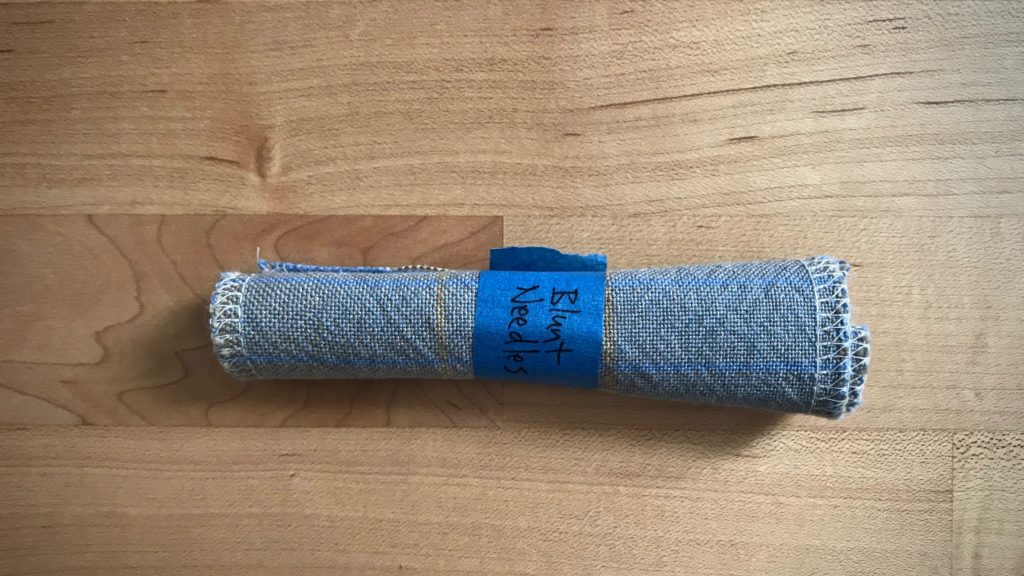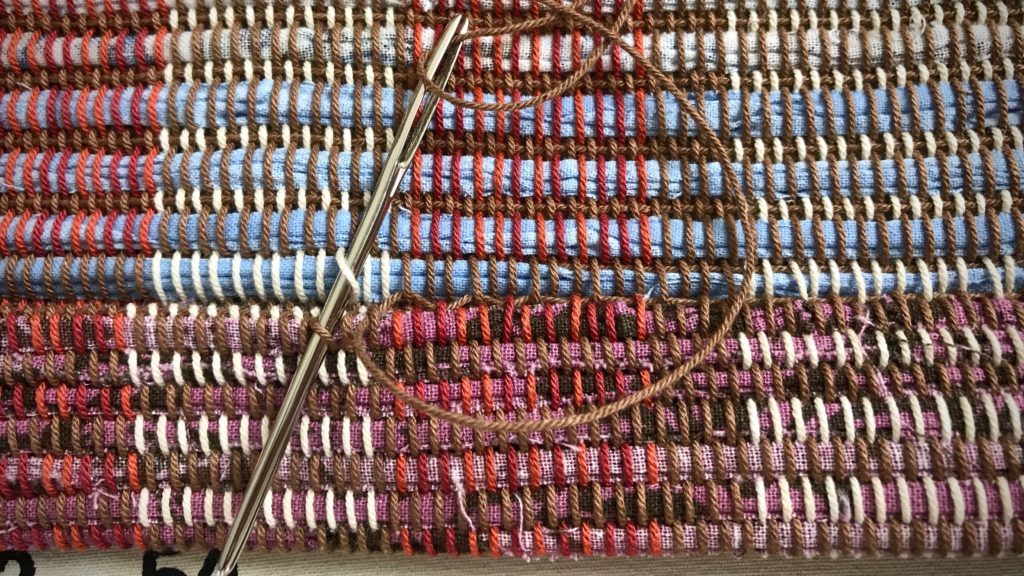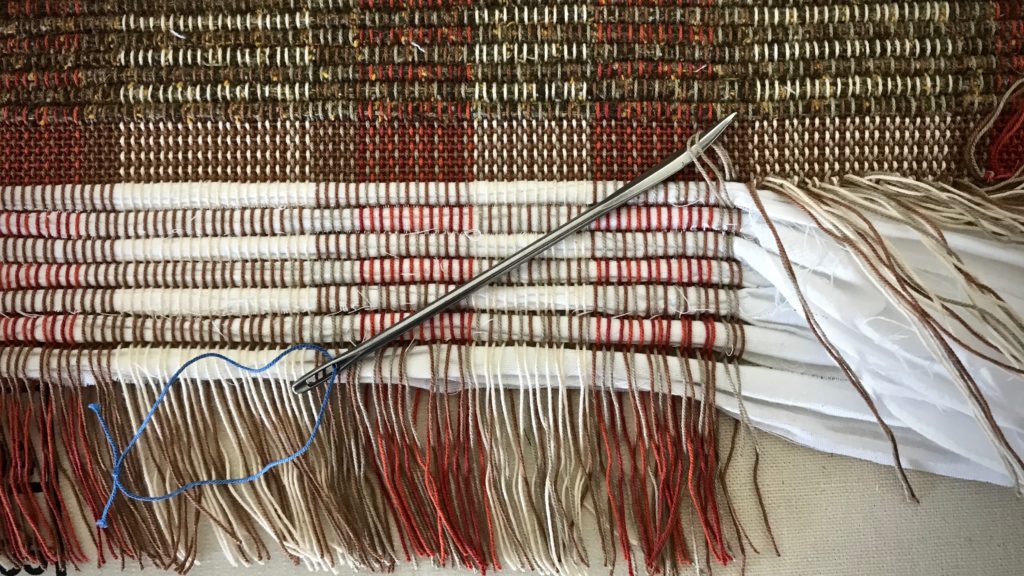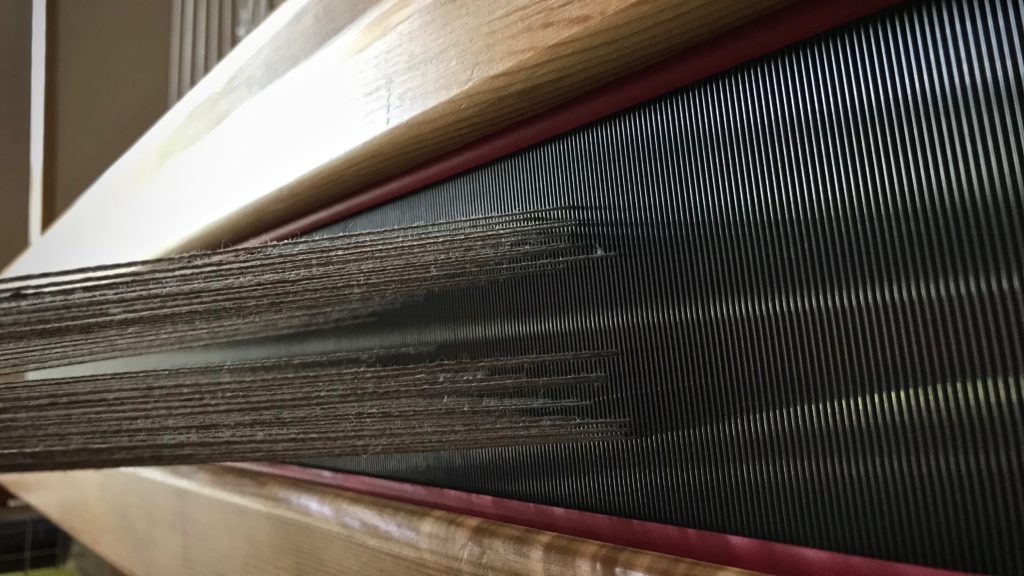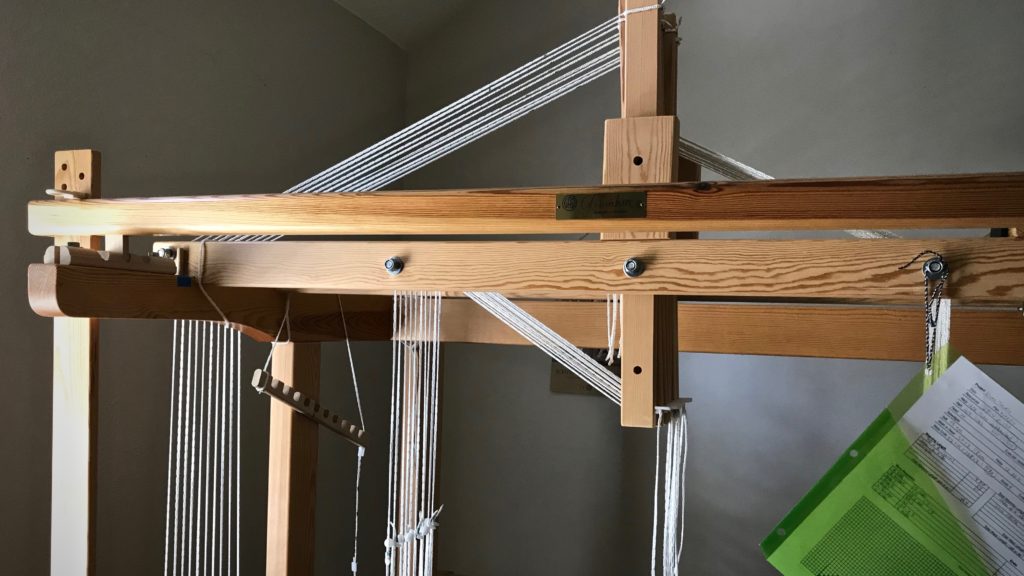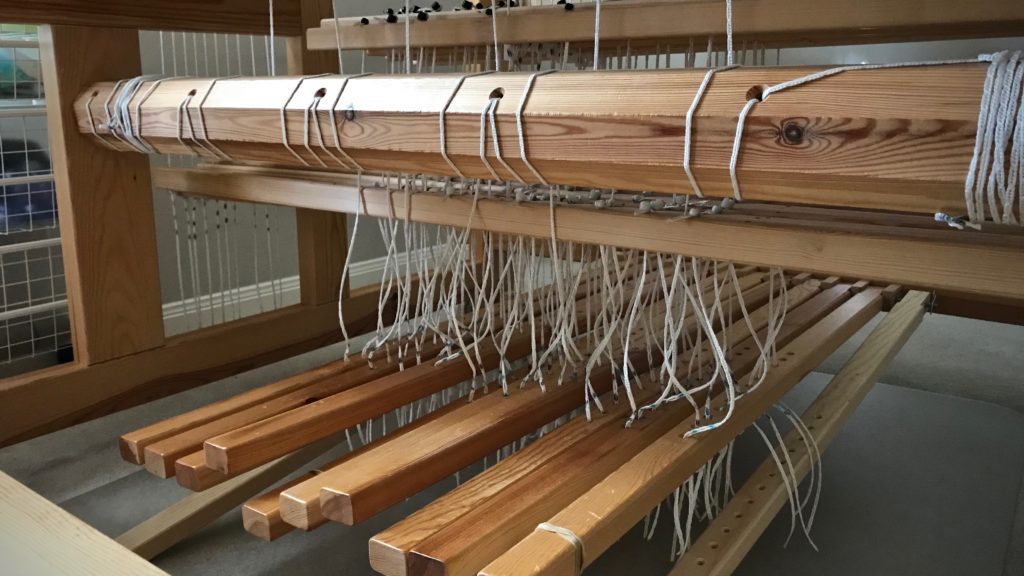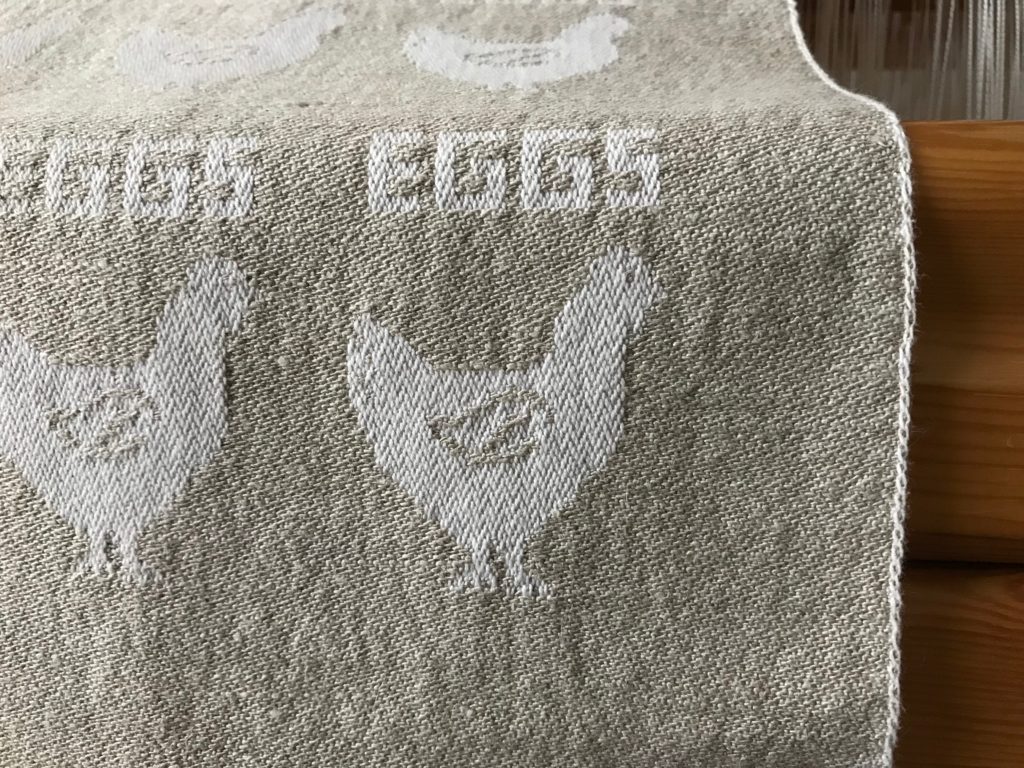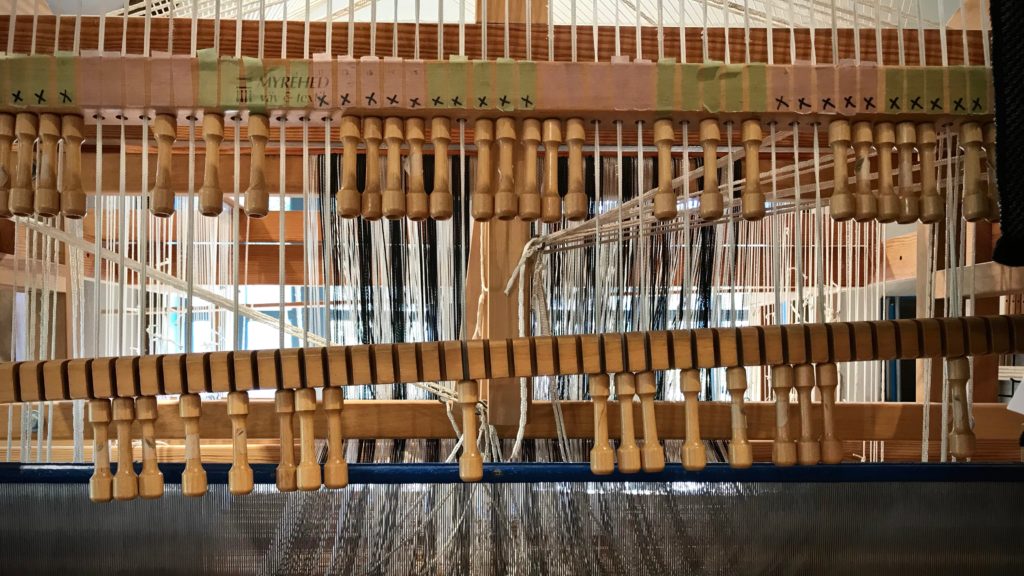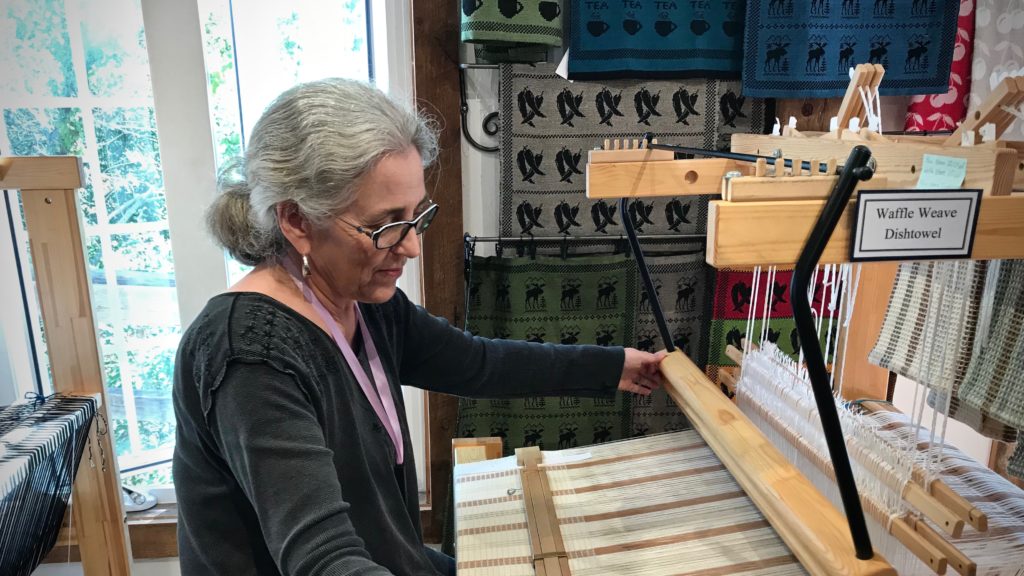Even though there are dozens of needles in and around my weaving and sewing spaces, nine stand out from the rest. These go-to needles have earned special favor. As essential tools, these needles have specific holders and permanent homes.
- Sharp needles: hand-hemming, hand-sewing, stitching on labels, and stitching a tapestry to a linen mat for mounting (curved needle)
HOLDER: Pincushion I made in 1980
HOME: Sewing supply closet, “Needles and Pins” drawer
- Blunt tapestry needles, small and medium: hemstitching, stitching a thread mark to the right side of the fabric, sewing in tapestry weft tails, finishing work—needle-weaving for corrections and repairs
HOLDER: Remnant of cotton handwoven plain weave fabric
HOME: Loom-side cart, top drawer

- Blunt tapestry needles, large: hemstitching, hand-hemming rugs, weaving small tapestries
HOLDER: Felted inkle-woven tape
HOME: cutting/work table, Grandma’s old sewing tin
- Sacking needles: pulling rag rug warp ends out of scrap weft, threading warp ends back into a wool rug (I did this…once)
HOLDER: straw-woven pouch from a trip to The Philippines
HOME: weaving supply closet, top drawer on the left
May you find the needle you need when you need a needle.
All the best,
Karen





